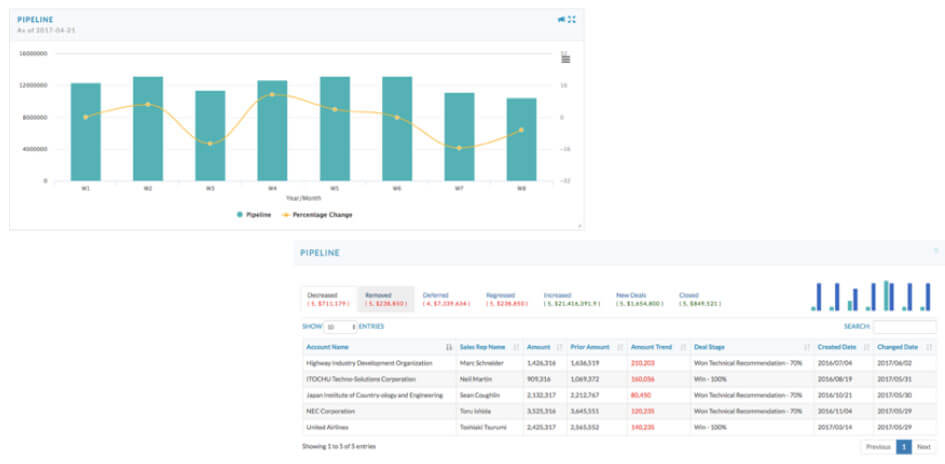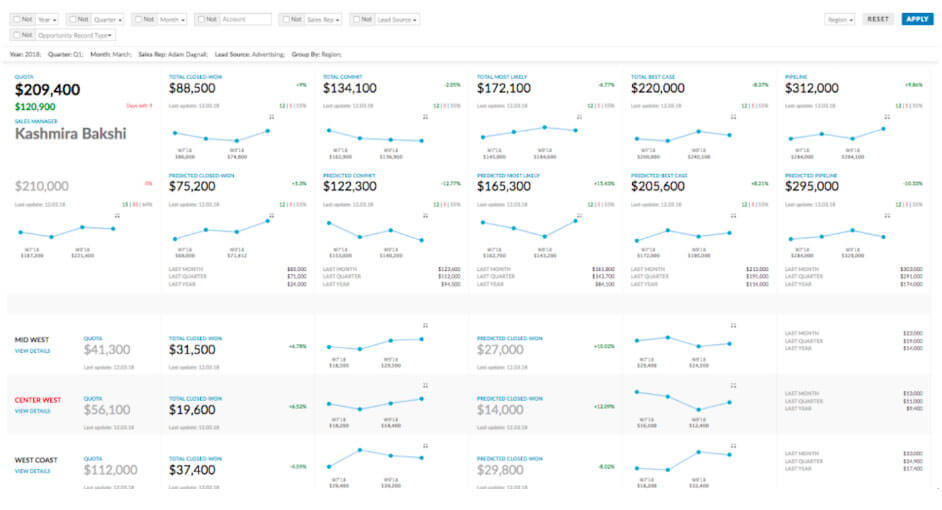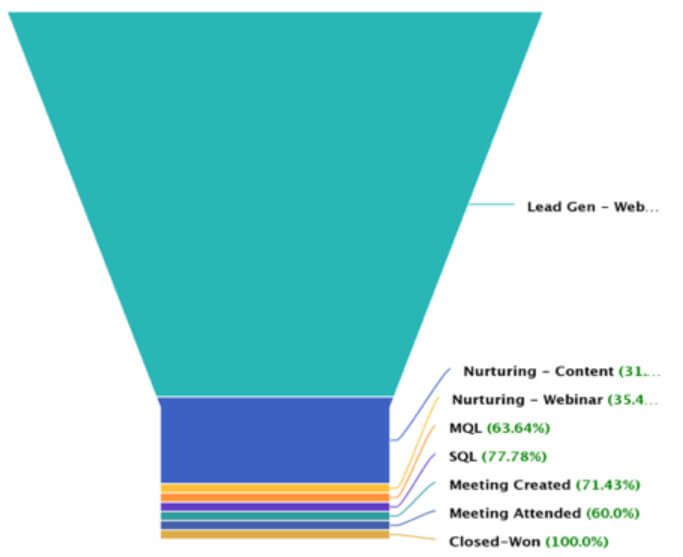
Sales Forecasting is a crucial component of any business that empowers them to predict future sales by looking into past sales, economic trends and competitive intelligence. We have already discussed various sales forecasting methods in detail in some of our previous posts.
And solid sales forecast can’t be accomplished without an effective and efficient sales forecast meeting. As a Sales Leader, did you know that running an efficient sales forecast meeting can have some serious positive impact on your revenue? Through these meetings, you can find out what is wrong in each of your sales reps’ pipelines and at which stage.
Here are a few strategies for running efficient sales forecast meetings that will work for you:
1) Have a Frequent Sales Forecast Meetings with Your Reps
Even if you are not able to have a meeting as frequent as weekly, you can pull out the data to review if the team is on the right track. Doing this more often will help you allocate your resources effectively and you will eventually be prepared for the upcoming forecast/review meetings. Most modern sales analytics software vendor maintain change history of your deals. If you can’t meet weekly, configure your sales analytics software to send out a change records for your deal for the week to both you and the sales rep. This way when you do meet there is no confusion about what transpired since the last meeting.

Pipeline History & Change Tracking
2) Prioritize the Deals From Every Group of Accounts
Say, A group is your most preferred group of accounts and C is the least, pick only a few important ones from B and C groups and prioritize the ones in A group. By prioritizing the deals you are eliminating the less important ones, which implies you are selecting the important deals that need to be discussed.

3) Clear Selection Criteria
The criteria of which deals to be discussed should be clear and well understood so everybody on the team is prepared with the required level of details. The techniques can be used to reduce the number of deals to be discussed without affecting the close rate of the pipeline.
4) Single Source of Truth
Select one source where everybody goes to get every detail they want to know about the pipeline and related data. To have an effective forecast meeting, both you and your sales rep must come prepared with the appropriate information and data. There has to be a common source which can be accessed by anyone in the organization to know how the deals are moving in the pipeline.
Ideally you have access to a analytics / dashboarding solution with on-the-fly filtering and pivoting capabilities that you can use during the meeting to answer any open questions. Spreadsheets can work as well, but depending on the size of your pipeline, spreadsheets can get a bit too-slow and clumsy to support the kind of in-meeting capabilities you would need for an efficient sales forecasting meeting.

5) Identify Deals in Jeopardy
Identify deals which have changed their status since the last meeting. There are some time-tested ways of identifying deal in jeopardy:
Deals which were committed in the last meeting and are no longer committed.
Deals for which the expected closing date has been moved out of the quarter.
“Two Kick Rule”. If a deal has had its expected closing date changed more than twice in the current quarter, it should be discussed with higher priority. Historically, such deals are less likely to close. Sales reps should then focus on fast-closing deals.
Deals for which the deal amount has substantially increased or decreased, after the deal has already moved beyond MQL stage. More than 20% increase or decrease in deal value after then. Most deals start out with Extraordinarily large deals.
6) Inadequate Pipeline
For most businesses, it is safe to assume that for an average sales rep to achieve her quota for the quarter, their pipeline value needs to be at least 3 times the size of their quota for the quarter. In many cases the multiple is as high as 4 times. It’s possible that the numbers don’t hold true for your particular company or business unit but it’s imperative that you find out the exact number which is valid for your case. Any decent sales analytics software should be able to help you easily identify such multiples. Once such multiples are established use it as a guide to figure out if pipeline details need to be discussed in a sales forecasting meeting with the rep or not. Skip it if things look ok so you can focus on more important topics.

7) Incorporate a Way to Include the Latest Information About the Deals as a Part of Your Workflow
Usually, CRM software has various stages that deal can be a part of. There are typically certain probabilities associated with a particular stage.
However, sometimes there is information about the deals that rep knows which can have an effect on the probability that is associated with the stage the deal is associated with at any point in time. For example, let’s say a deal is at POC (proof of concept) stage and a probability of 60% is associated with the POC stage but the rep has recently found out that the main sponsor of the deal at the prospect is leaving the organization. This greatly reduces the chances of a deal to close even though the POC stage states that the probability of closing is 60%. In general, 60% probability is correct for the deal in the POC stage but this particular case is different. There should be a way for the rep to flag such cases. Most Forecasting Tools offer a way for reps to override deal probability without moving the deals to a stage earlier than POC.
8) Invite Other Team Players to Gain Their Insight
For example, a technical sales engineer can explain complex technical information. They can have certain pieces of information about a particular deal that your rep might have overlooked. Get the two talking in the forecasting meeting and you can be the liaison between the two.
Finally, at the core of running an efficient sales forecast meeting is “Data”.
You need to use historical information, revisit the forecasts, track where your sales team is spending time etc. so that you can ask all hard-hitting questions and guide your team towards better closure rate.
Ability to access that kind of granular data and correct sales metrics is extremely powerful for running efficient forecast meetings. This allows you (VP of Sales), to have control over forecasted opportunities and see that the progress is being made.
Cheers to many more happy forecasting meetings to come!
For more information about MoData offerings click here




